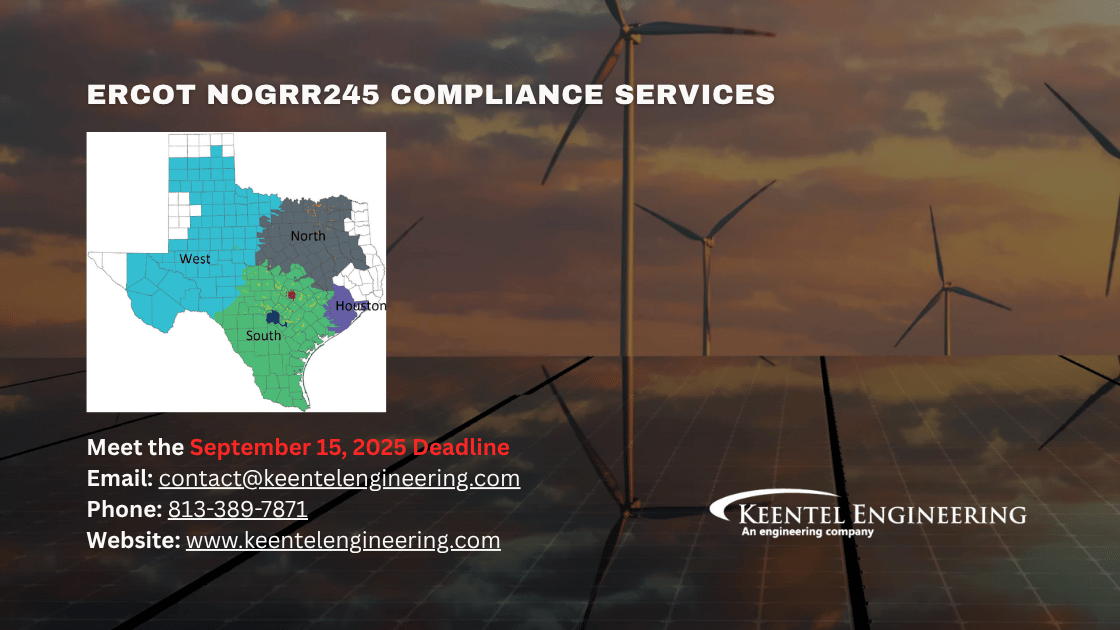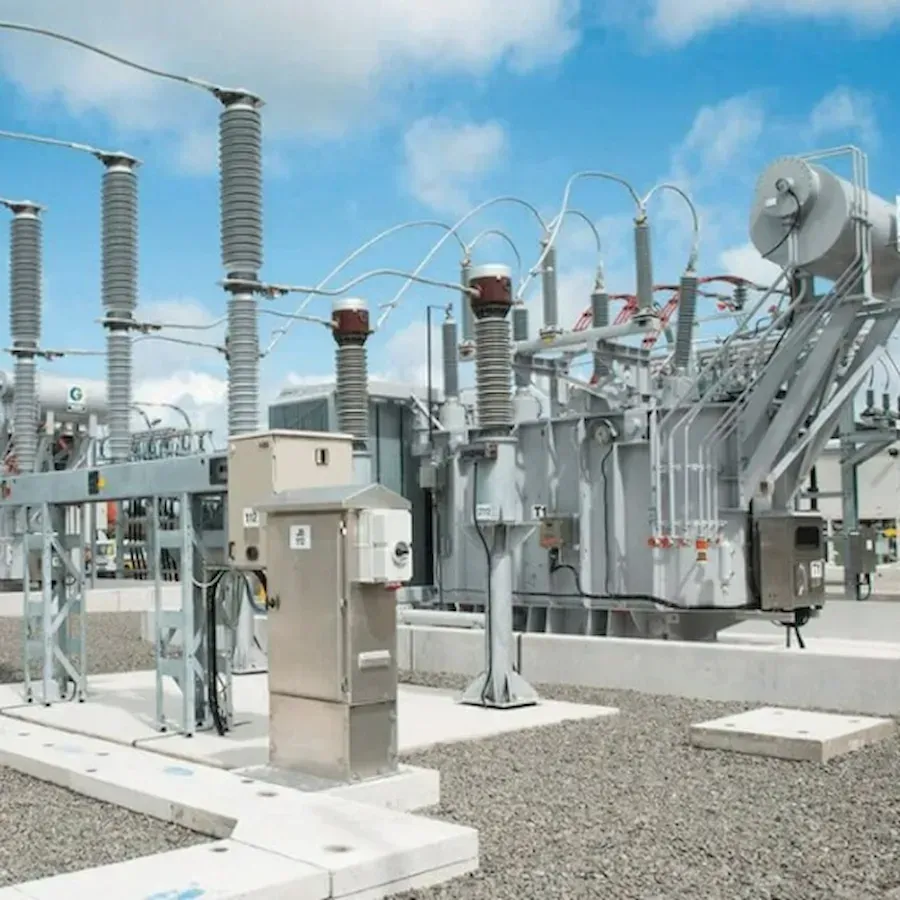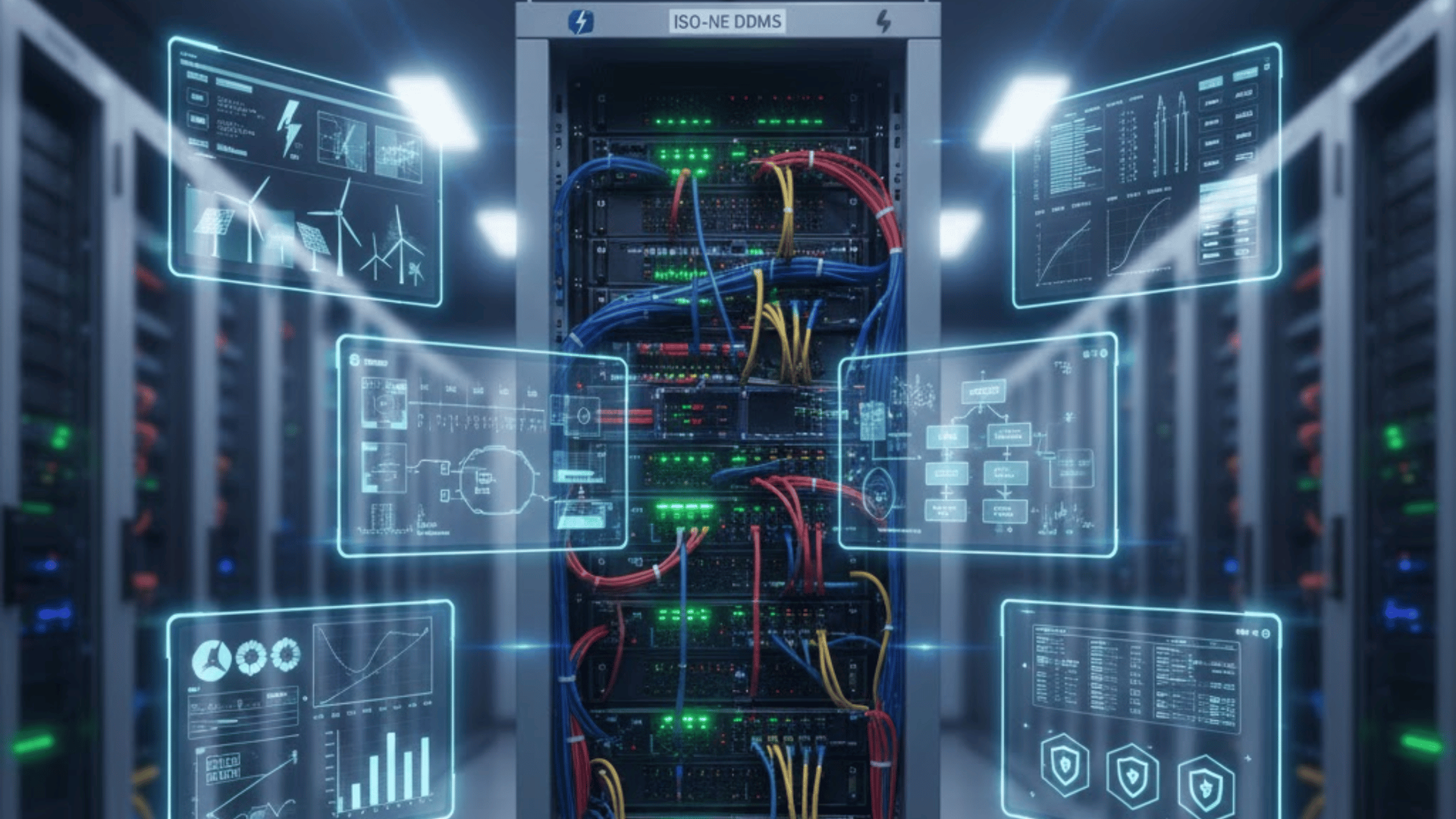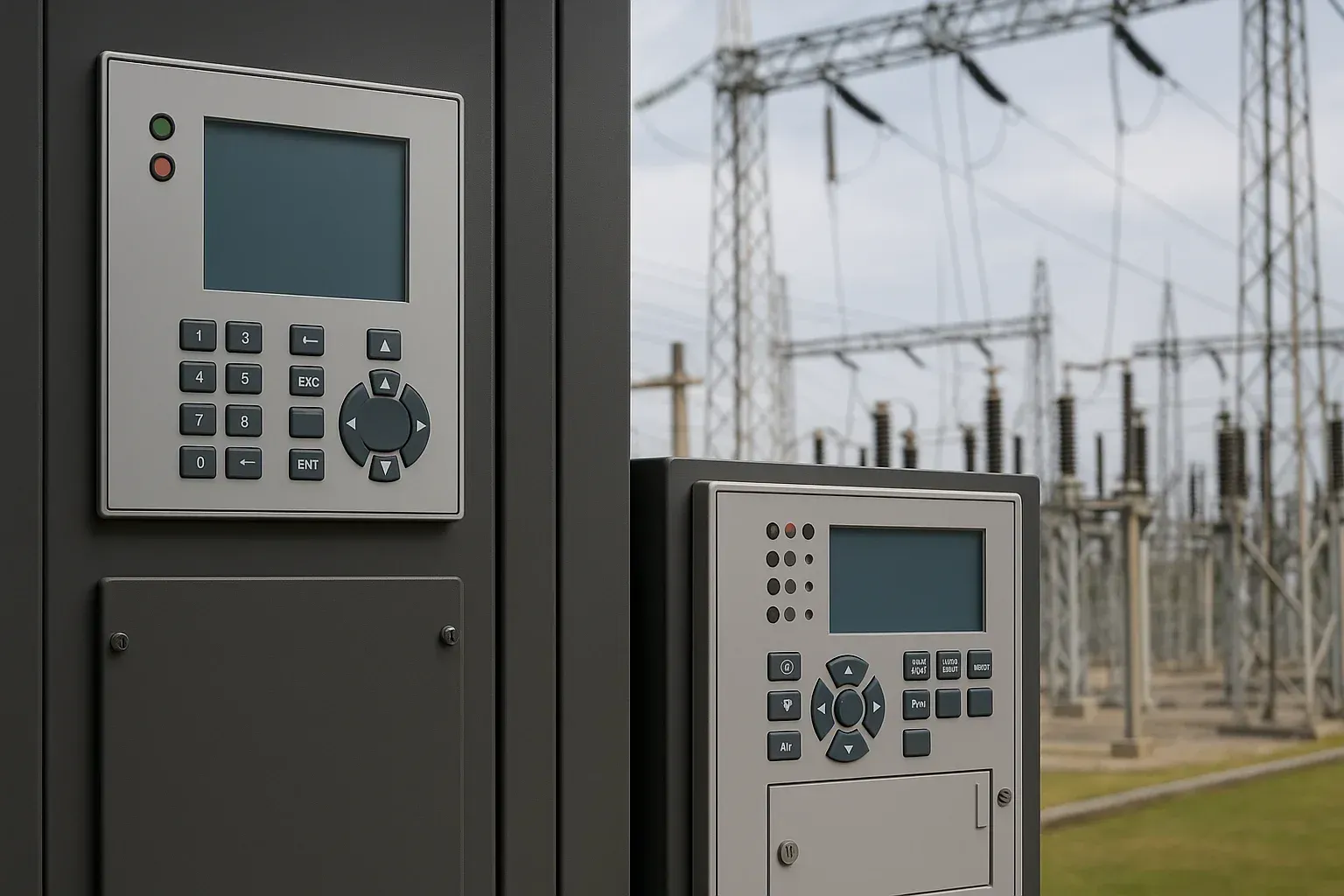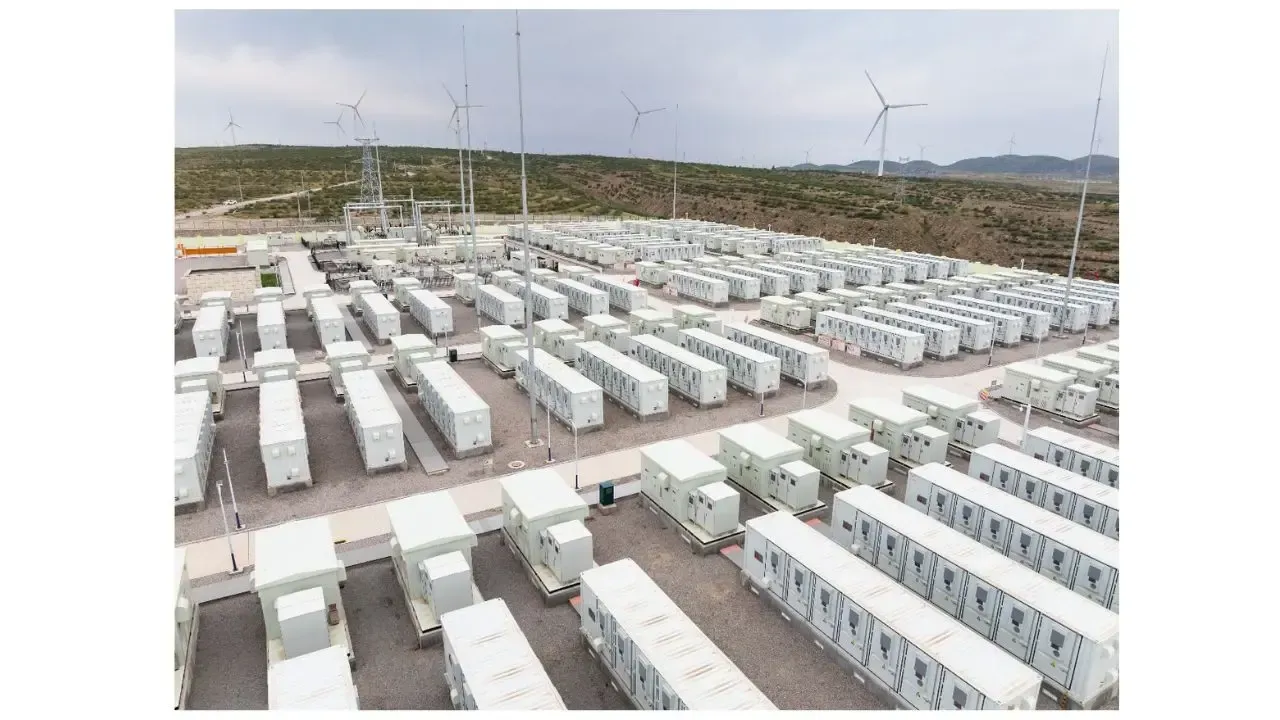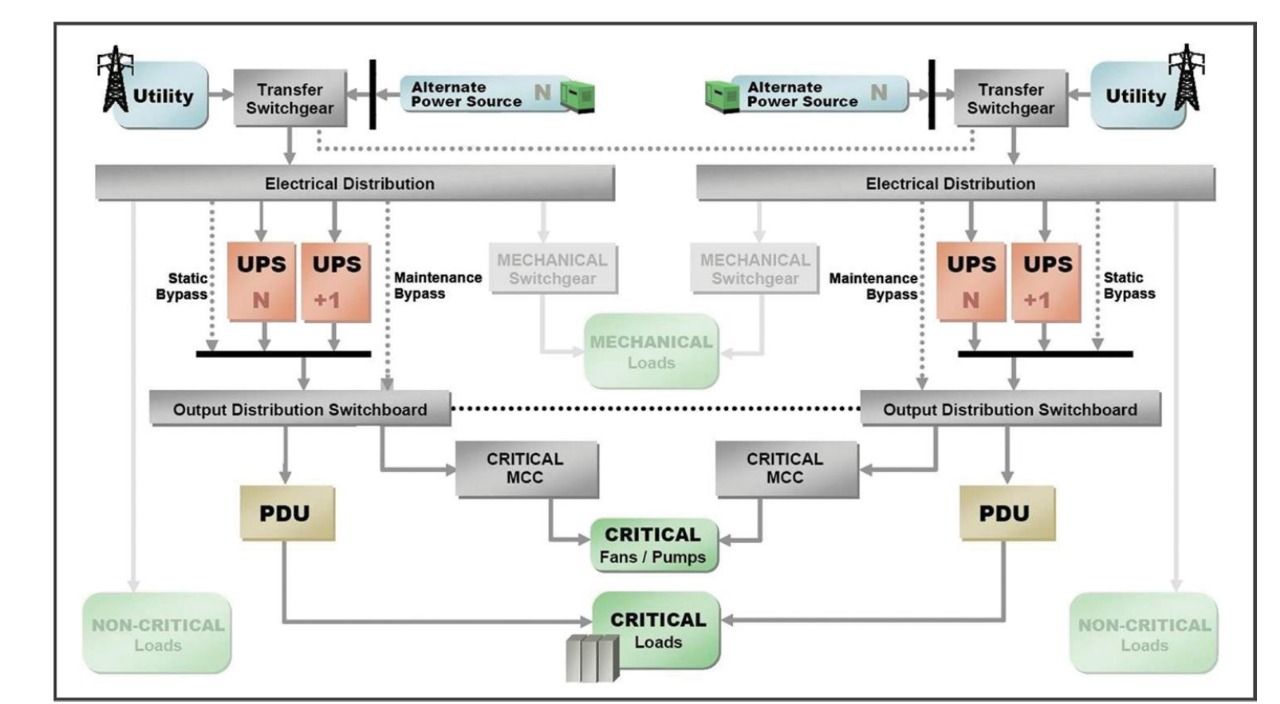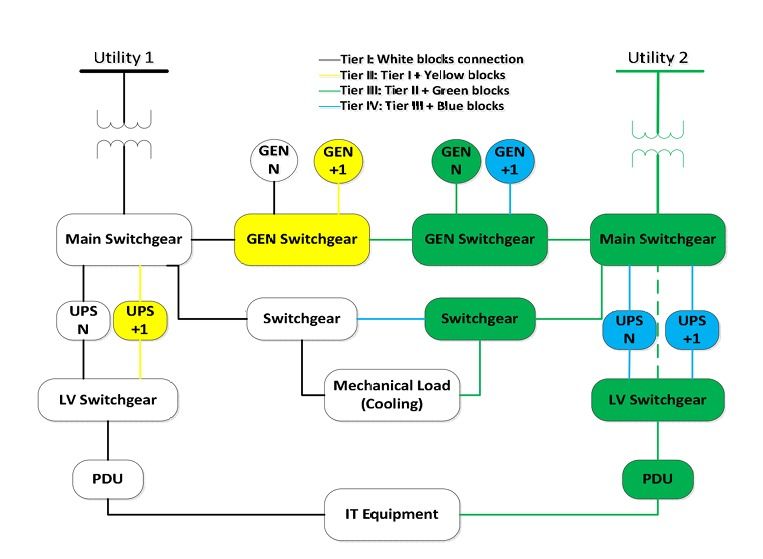A Coordinated Electric System Interconnection Review—the utility’s deep-dive on technical and cost impacts of your project.
Challenge: Frequent false tripping using conventional electromechanical relays
Solution: SEL-487E integration with multi-terminal differential protection and dynamic inrush restraint
Result: 90% reduction in false trips, saving over $250,000 in downtime
ERCOT NOGRR245 Compliance Services – Meet the September 15, 2025 Deadline with Keentel Engineering
August 6, 2025 | Blog
Introduction
The Public Utility Commission of Texas (PUCT) and ERCOT have significantly strengthened Inverter-Based Resource (IBR) ride-through performance requirements. Under the Nodal Operating Guide Revision Request (NOGRR) 245, effective October 1, 2024, all transmission-connected IBRs, Type 1 Wind Generation Resources (WGRs), and Type 2 WGRs must meet strict frequency ride-through and voltage ride-through standards or apply for extensions/exemptions under PUCT Substantive Rule 25.517.
If you are a Resource Entity or Interconnecting Entity that filed for an extension or submitted a notice of intent to request an exemption, the compliance clock is ticking. ERCOT identified that many April 2025 submissions were incomplete, granting all requestors until September 15, 2025 to submit complete and accurate ride-through capability data.
Keentel Engineering specializes in guiding
energy developers,
asset owners, and
operators through the complex NOGRR245 compliance process—ensuring every
IFRTCR,
IVRTCR, and model submission meets ERCOT’s technical and procedural requirements. Learn more about our
NERC compliance engineering services to see how we can help you meet this critical deadline.
Why NOGRR245 Matters
ERCOT’s reliability assessments have identified recurring ride-through failures in inverter-based resources (IBRs)—issues that could threaten Texas grid stability during frequency or voltage disturbances.
NOGRR245 compliance strengthens the Nodal Operating Guides to ensure every resource can ride through specified frequency ride-through and voltage ride-through excursions without tripping offline.
For full ERCOT compliance, each resource must provide:
- Resource-specific ride-through capability data at the Point of Interconnection (no generic OEM statements)
- Accurate post-modification models uploaded in RIOO
- Verified technical limitations via OEM or engineering letters, or notarized attestations
- Completed IFRTCR (frequency ride-through) and/or IVRTCR (voltage ride-through) forms
- An official exemption request if unable to comply with the requirements
To understand the technical studies that support ride-through readiness, review our
power system studies services.
What ERCOT Found Missing
ERCOT’s review of over 900 NOGRR245 compliance submittals revealed several recurring deficiencies:
- Missing required ride-through technical data
- Non-resource-specific, generic ride-through documentation
- Data not reflecting Point of Interconnection (POI) performance
- Delays due to pending OEM model updates
Without this information, ERCOT cannot properly assess extension or exemption requests, which could delay interconnection approval and put your project’s operational readiness at risk.
For More Information, visit: ERCOT NOGRR-245 Compliance
What You Must Submit for NOGRR245 Compliance
1. IFRTCR or IVRTCR Forms
- IFRTCR (Initial Frequency Ride-Through Capability Report) – required for frequency compliance (per Nodal Operating Guide §2.6.2.1)
- IVRTCR (Initial Voltage Ride-Through Capability Report) – required for voltage compliance (per Nodal Operating Guide §2.9.1.2)
Each form must include:
- Resource and site details
- Current capability tables
- Known technical limitations
- OEM/engineering letters or notarized attestations
- Planned software, firmware, or hardware modifications
- Post-modification capabilities
- Implementation schedule
- Limitations that cannot be represented in models
2. Accurate Post-Modification Model
- Submit through ERCOT’s Resource Integration and Outage Operations (RIOO) system labeled “NOGRR245 Model Submission”
- Must fully reflect all technical limitations
3. Exemption Requests (PUCT 25.517(c))
If you are seeking an exemption:
- Complete ERCOT’s official exemption form (to be released in a future market notice)
- Attach all IFRTCR and/or IVRTCR data with your exemption request
- Provide supporting OEM/engineering letters or notarized attestations documenting technical limitations
- Submit all materials by September 15, 2025 — late or incomplete requests will not be accepted
Keentel Engineering’s ERCOT NOGRR245 Compliance Support
Meeting ERCOT NOGRR245 technical and procedural requirements—especially under PUCT 25.517(c)—can be complex and time-sensitive. Keentel Engineering offers turnkey compliance services to help Resource Entities and Interconnecting Entities avoid costly delays or rejections, ensuring all IFRTCR and IVRTCR submissions are complete and error-free before the September 15, 2025 deadline.
Our NOGRR245 Compliance Services Include:
Data Gap Analysis – Review and identify missing or incomplete ride-through data in your current submissions
Capability Table Preparation – Create IFRTCR/IVRTCR ride-through capability tables per Nodal Operating Guide requirements
OEM & Engineering Coordination – Work directly with OEMs and engineering teams to obtain signed technical limitation verification letters
Notarized Attestations – Draft and prepare notarized statements when OEM letters are unavailable
Post-Modification Modeling – Develop and submit accurate post-modification models via the RIOO system
Exemption Request Preparation – Complete all exemption forms in compliance with PUCT 25.517(c)(1)-(9)
Internal Compliance Tracking – Use our proprietary NOGRR245 Excel checklist to track every deliverable
Quality Control Review – Conduct a full compliance audit before ERCOT submission to minimize rejection risk
Risks of Non-Compliance with ERCOT NOGRR245
Failing to meet the September 15, 2025 ERCOT NOGRR245 deadline can result in:
- Denial of extension or exemption requests under PUCT 25.517
- Immediate requirement to comply with all ERCOT ride-through performance standards
- Potential operational restrictions imposed by ERCOT
- Higher risk of penalties for reliability violations
Why Choose Keentel Engineering for ERCOT Compliance
- Proven ERCOT Compliance Track Record – Successful delivery on multiple Inverter-Based Resource (IBR), Wind Generation Resource (WGR), and ride-through modeling projects
- In-Depth Market Knowledge – Experienced with ERCOT market notices, PUCT regulations, and Nodal Operating Guide requirements
- Integrated Technical & Regulatory Expertise – Engineering, modeling, and compliance support in one service package
- Fast Turnaround Times – Structured processes to meet urgent ERCOT and NERC compliance deadlines
Action Steps Before September 15, 2025
Identify all resources under extension or exemption requests
Gather complete IFRTCR and IVRTCR capability tables
Obtain OEM/engineering verification letters or prepare notarized attestations
Model post-modification capabilities and ensure accuracy
Submit all required data to ERCOT via NOGRR245@ercot.com and the RIOO system
File official exemption forms if applying under PUCT 25.517(c)
Contact Keentel Engineering Today
Don’t risk ERCOT rejecting your submission—our team can ensure every document, model, and table meets NOGRR245 standards before the deadline.
Email:
contact@keentelengineering.com
Phone:
813-389-7871
Website:
www.keentelengineering.com
Related Service:
NERC Compliance Services
Frequently Asked Questions – ERCOT NOGRR245 Compliance
1. What is NOGRR245?
NOGRR245 is a Nodal Operating Guide Revision Request approved by the Public Utility Commission of Texas (PUCT) that strengthens ERCOT’s ride-through performance requirements for Inverter-Based Resources (IBRs), including frequency ride-through and voltage ride-through capabilities.
2. Who must comply with NOGRR245?
All transmission-connected IBRs, Type 1 Wind Generation Resources (WGRs), and Type 2 WGRs that have submitted an extension request or exemption request under PUCT 25.517(c) must provide complete, resource-specific ride-through capability data to ERCOT by September 15, 2025.
3. What is the compliance deadline?
The final deadline is September 15, 2025. Late or incomplete submissions will be rejected by ERCOT, which may result in denial of your extension or exemption request.
4. What forms are required?
You must submit either:
- IFRTCR (Initial Frequency Ride-Through Capability Report) for frequency requirements (§2.6.2.1)
- IVRTCR (Initial Voltage Ride-Through Capability Report) for voltage requirements (§2.9.1.2)
5. Where do I send my completed forms?
Send completed IFRTCR or IVRTCR forms to NOGRR245@ercot.com.
6. How do I submit models to ERCOT?
Post-modification models must be submitted via the RIOO system with the label “NOGRR245 Model Submission.”
7. What data must be included in IFRTCR/IVRTCR?
- Resource entity details (name, DUNS, site name, unit names)
- Current ride-through capability tables per Nodal OG format
- All known technical limitations
- OEM or engineering verification letters / notarized attestations
- Planned modifications and implementation schedule
- Post-modification capability tables and models
8. What if my OEM cannot provide a verification letter?
You must submit a notarized attestation signed by your highest-ranking representative explaining:
- Efforts taken to obtain the OEM letter
- Why those efforts were unsuccessful
- Technical limitations of the resource
9. What deficiencies has ERCOT identified in past submissions?
- Missing required technical data
- Generic, non-resource-specific ride-through data
- Data not reflecting Point of Interconnection performance
- Delays due to pending OEM model updates without interim dataa
10. Why are ride-through capability tables required?
These tables document your resource’s ability to ride through frequency or voltage disturbances, ensuring compliance with ERCOT’s Nodal Operating Guides.
11. What is PUCT Substantive Rule 25.517(c)?
This rule outlines the process for requesting an exemption from ERCOT reliability requirements and specifies the data, models, and documentation that must be provided.
12. Can I request an exemption after September 15, 2025?
No. ERCOT will not accept any exemption requests after the deadline.
13. What happens if I miss the deadline?
ERCOT may:
- Deny your extension or exemption request
- Require immediate full compliance
- Impose operational restrictions
14. What’s the difference between IFRTCR and IVRTCR?
- IFRTCR – Frequency ride-through capability report (§2.6.2.1)
- IVRTCR – Voltage ride-through capability report (§2.9.1.2)
15. How does Keentel Engineering assist with compliance?
We provide turnkey ERCOT compliance services, including:
- Gap analysis of IFRTCR/IVRTCR submissions
- OEM/engineering letter coordination
- Notarized attestation preparation
- Ride-through table creation per Nodal OG
- Post-modification model preparation and RIOO submissions
- Full ERCOT & PUCT compliance packages
16. Can I submit generic OEM data?
No. ERCOT requires resource-specific performance data at the Point of Interconnection.
17. What are the risks of providing incomplete models?
Incomplete or inaccurate models may lead ERCOT to reject your submission, delaying approval and forcing immediate compliance without extensions or exemptions
18. What must my model include?
It must reflect post-modification performance and accurately represent all technical limitations.
19. What if my resource is already compliant?
You must submit a statement confirming that your current ERCOT-submitted model fully represents all technical limitations.
20. How can I get started with Keentel Engineering?
Secure Your ERCOT Compliance Before September 15, 2025
The ERCOT NOGRR245 deadline is fast approaching. Missing it could mean losing your extension or exemption, facing operational restrictions, and being forced into immediate compliance.
📅 Deadline: September 15, 2025

About the Author:
Sonny Patel P.E. EC
IEEE Senior Member
In 1995, Sandip (Sonny) R. Patel earned his Electrical Engineering degree from the University of Illinois, specializing in Electrical Engineering . But degrees don’t build legacies—action does. For three decades, he’s been shaping the future of engineering, not just as a licensed Professional Engineer across multiple states (Florida, California, New York, West Virginia, and Minnesota), but as a doer. A builder. A leader. Not just an engineer. A Licensed Electrical Contractor in Florida with an Unlimited EC license. Not just an executive. The founder and CEO of KEENTEL LLC—where expertise meets execution. Three decades. Multiple states. Endless impact.
Services

Let's Discuss Your Project
Let's book a call to discuss your electrical engineering project that we can help you with.

About the Author:
Sonny Patel P.E. EC
IEEE Senior Member
In 1995, Sandip (Sonny) R. Patel earned his Electrical Engineering degree from the University of Illinois, specializing in Electrical Engineering . But degrees don’t build legacies—action does. For three decades, he’s been shaping the future of engineering, not just as a licensed Professional Engineer across multiple states (Florida, California, New York, West Virginia, and Minnesota), but as a doer. A builder. A leader. Not just an engineer. A Licensed Electrical Contractor in Florida with an Unlimited EC license. Not just an executive. The founder and CEO of KEENTEL LLC—where expertise meets execution. Three decades. Multiple states. Endless impact.
Leave a Comment
We will get back to you as soon as possible.
Please try again later.
Related Posts


